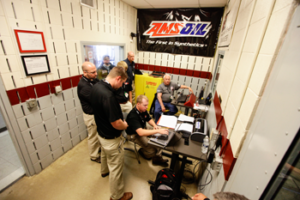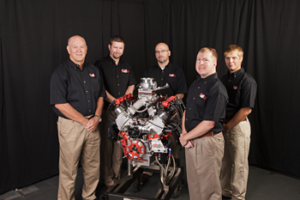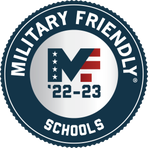School of Automotive Machinists & Technology Scores at Amsoil Engine Masters Challenge.
The School of Automotive Machinists & Technology has once again shown its mettle, collecting a top five finish at the Amsoil Engine Masters Challenge presented by Hot Rod magazine. SAM Tech scored an impressive 4th place finish against 30 of the best performance engine building shops in the nation.
“We are thrilled to once again place in the top five,” said Judson Massingill, Director of Education and co-owner at the SAM Tech. “Engine Masters is a true test of just the engine—no chassis, no driver, just power. When people see we can compete competitively with some the best professional shops in the country, they realize our students are really learning something. The exposure EMC gets shows potential employers the school’s capabilities and this opens doors for our graduates, who typically land at premier engine shops. In fact, I am proud to say, every team in the finals this year had a SAM Tech graduate on it,” he added.
The SAM Tech team entered a 436-cubic inch Chevrolet LS engine using a GM Performance Parts LSX block with CIC LS-7-style heads and a Comp Cams camshaft. The engine produced an average peak of 727.00 horsepower and an average peak of 640.67 lb-ft of torque in the tested range. “Engine Masters allows us to showcase what we teach. We are an engine building school, not a chassis tuning school, and the competition shows how competitive we can be against professional engine builders,” Massingill added. “We have made the finals all but one year since 2006, when we started competing. We have won twice (2011 Street Division, 2012 Xtreme Street Division), in 2011 there were two classes, and we won the Street Division and were runner up in the Xtreme street division.”
The 2014 EMC pitted 30 teams in a head-to-head competition—but it is the engines that do the talking. Engine Masters takes place each October at the University of Northwestern Ohio. Engines are first tested for horsepower and torque in a qualifying round, only the top five engines make the finals. Points are awarded based on average power—the winning engine is the one that accumulates the most points. The rules stated participants must use a two-valve-per cylinder engine of OE (factory) architecture, a hydraulic roller cam, and pump gas. Engines were tested from 3,000-6,500 rpm.
 “The students we choose for the competition are the ones who have dedicated the most amount of time to the EMC project,” explained shop instructor and team leader Chris Bennett. “It also allows them to participate in a real-world competition and they get the experience of intensive testing of components,” he added.
“The students we choose for the competition are the ones who have dedicated the most amount of time to the EMC project,” explained shop instructor and team leader Chris Bennett. “It also allows them to participate in a real-world competition and they get the experience of intensive testing of components,” he added.
With so many options, selecting engine platform is one of the biggest challenges. “Choosing a combination that can win is the most difficult,” stated Massingill. “Finding enough time to test everything you can dream up and producing power over such a broad range is also one of our biggest challenges.
“Of course it takes a lot to even make it to EMC, and we would like to thank the following companies: AMSOIL, Aeromotive, ARP, CID Heads, Cometic, Comp Cams, Fel-Pro, Flowmaster, Holley fuel injection, Jessel, KCS, GM Performance Parts, MAST Motorsports, MSD, Pace Performance, Total Seal, MAHLE, Clevite, Smith Brothers, Stef’s Fabrication, Schuman Oil Pumps, and VP Fuels.”






